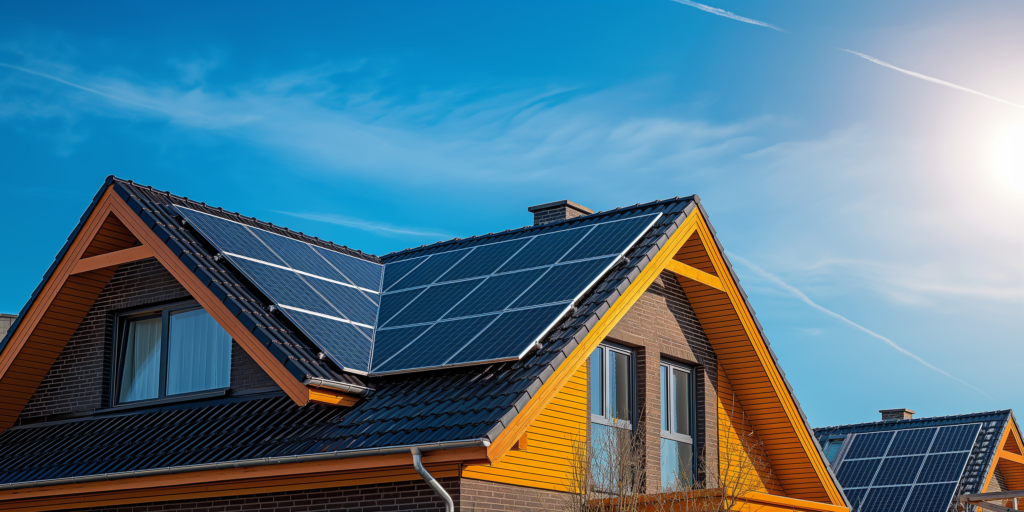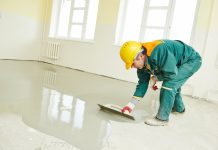In 2024, the landscape of roofing design in the UK is evolving with remarkable innovations and trends. Homeowners, architects, and builders alike are keen to explore what’s new and effective in roofing. From sustainable materials to cutting-edge technology, this blog post delves into the hottest trends shaping the roofing industry today.
Introduction
In the rapidly changing world of architecture and construction, staying updated with the latest roofing trends is essential. Modern roofing enhances the aesthetic appeal of buildings and significantly impacts energy efficiency, sustainability, and overall durability. This year, the focus is on integrating environmentally friendly materials, embracing technological advancements, and ensuring that roofs are designed to last. Let’s explore these trends in detail.
Sustainable Materials

Eco-friendly Options
The shift towards sustainability is a dominant trend in 2024. Homeowners increasingly opt for eco-friendly roofing materials, driven by a desire to reduce their environmental footprint.
- Recycled Shingles: These are made from rubber, plastic, and wood fibre waste materials. They offer a sustainable alternative to traditional asphalt shingles and are known for their durability and aesthetic appeal.
- Green Roofs: Green roofs, also known as living roofs, are covered with vegetation. They provide excellent insulation, reduce stormwater runoff, and contribute to urban biodiversity.
- Solar Tiles: Unlike conventional solar panels, solar tiles integrate seamlessly into the roof design, providing a sleek, unobtrusive way to harness solar energy.
Benefits
Choosing sustainable materials offers numerous benefits:
- Environmental Impact: Reduced reliance on non-renewable resources and decreased waste.
- Energy Efficiency: Improved insulation and energy generation capabilities.
- Cost Savings: Potential reduction in energy bills and maintenance costs over time.
Technological Innovations

Smart Roofing Systems
Integrating smart technology into roofing systems transforms how we manage and maintain roofs.
- Sensors: Smart roofs come equipped with sensors that monitor weather conditions, detect leaks, and provide real-time data on the roof’s condition. This proactive approach helps in preventing damage and extending the roof’s lifespan.
- Automation: Advanced roofing systems can adjust according to weather changes, optimising energy efficiency and ensuring comfort within the building.
Solar Integration
Solar integration continues to be a significant trend. Modern solar roofing solutions are designed to blend seamlessly with the roof’s aesthetics while providing substantial energy benefits.
- Aesthetic Appeal: Solar tiles are designed to match the appearance of traditional roofing materials, maintaining the building’s visual integrity.
- Functionality: These systems generate electricity and offer improved insulation, contributing to overall energy efficiency.
Design Aesthetics
Modern Minimalism
The trend towards sleek and minimalist design is evident in roofing choices.
- Metal Roofs: Metal roofs are becoming popular for their clean lines, durability, and modern look. They are available in various finishes and colours, allowing for customisation to match the building’s design.
- Glass Elements: Incorporating glass into roofing, such as in skylights and transparent sections, adds a contemporary touch and allows natural light to flood the interiors.
Traditional with a Twist
While modern designs are on the rise, there is also a growing appreciation for traditional aesthetics enhanced with modern techniques.
- Slate Roofs: Slate remains a favourite for its classic appeal and longevity. Modern installation techniques and materials have made slate roofs more accessible and durable.
- Clay Tiles: Traditional clay tiles are used with new manufacturing processes to improve their performance while maintaining their timeless look.
Durability and Performance
Weather Resistance
UK weather is known for its variability, and modern roofing solutions are designed to withstand these conditions.
- Heavy Rain: Improved drainage systems and water-resistant materials ensure roofs can handle heavy rainfall without leaks or damage.
- Strong Winds: Enhanced structural designs and anchoring systems provide resilience against strong winds, reducing the risk of damage during storms.
Longevity
New roofing materials and technologies are focused on extending the lifespan of roofs.
- Low Maintenance: Durable materials like metal and composite shingles require less maintenance, saving homeowners time and money.
- Long-lasting: Advances in material science have led to roofs that can last several decades, offering a better return on investment.
Energy Efficiency

Improved Insulation
Adequate insulation is a critical aspect of energy-efficient roofing.
- Advanced Insulation Materials: New insulation materials are more efficient at preventing heat loss in winter and keeping interiors cool in summer.
- Multi-layer Insulation: Combining different types of insulation materials enhances overall performance.
Reflective Surfaces
Reflective roofing materials are designed to minimise heat absorption.
- Cool Roofs: These roofs reflect more sunlight and absorb less heat, reducing cooling costs and improving indoor comfort during hot weather.
- Reflective Coatings: Applying reflective coatings to existing roofs is a cost-effective way to enhance energy efficiency.
Cost Considerations
Initial Investment vs. Long-term Savings
While some of the latest roofing trends involve higher upfront costs, they offer significant savings over time.
- Energy Bills: Improved insulation and energy generation through solar integration can drastically reduce monthly energy bills.
- Maintenance: Durable materials and smart technologies reduce the need for frequent repairs and maintenance.
Government Incentives
Several incentives are available to encourage the adoption of sustainable and energy-efficient roofing solutions.
- Grants and Rebates: Homeowners can use government grants and rebates to install green roofs, solar panels, and other eco-friendly roofing options.
- Tax Benefits: Certain energy-efficient upgrades may qualify for tax deductions or credits.
Case Studies and Examples

Real-world Applications
To illustrate these trends, let’s look at some recent roofing projects in the UK:
- Eco-homes in London: A series of eco-homes in London have adopted green roofs and solar tiles, showcasing how sustainable design can be both functional and visually appealing.
- Smart Roofing in Manchester: A commercial building in Manchester has installed a smart roofing system with integrated sensors and automated controls, improving energy efficiency and reducing maintenance costs.
Expert Insights
Industry experts share their views on the future of roofing design:
- Jon Smyth, Architect: “Integrating technology in roofing design is not just a trend but a necessity. Smart roofs are the future, offering unparalleled maintenance and energy efficiency benefits.”
- Jenna Dwight, Sustainable Design Consultant: “Sustainable roofing materials are no longer a niche market. They are becoming mainstream as more people recognise the environmental and financial benefits.”
Conclusion
In summary, the top trends in UK roofing design for 2024 reflect a shift towards sustainability, technological innovation, and enhanced durability. Homeowners and builders can create stylish, highly functional, cost-effective roofs by choosing eco-friendly materials, integrating smart technologies, and focusing on energy efficiency. As we move forward, these trends are set to redefine the roofing landscape, offering exciting possibilities for both new constructions and renovations.
For your next roofing project, consider these trends and consult with professionals to find the best solutions tailored to your needs. Staying informed and proactive will ensure that your roof is prepared to meet the challenges and opportunities of the future.




















